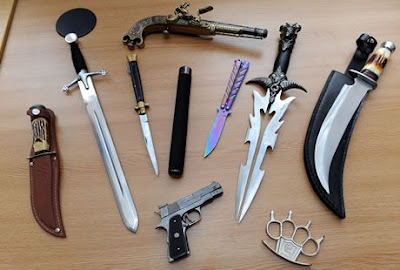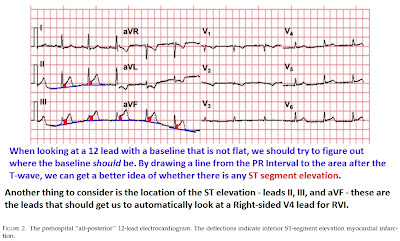WANTYNU asks –
We all know EMS can be dangerous, so if you could carry a weapon, would you and which would it be?[1]
–
–
Better to be judged by 12 than carried by 6.
This is the kind of reasoning used by the people who think they need to have a weapon to provide patient care.
This is not a valid choice this is just paranoia.
–
How many EMS personnel are shot on calls each year?
How many EMS personnel are stabbed on calls each year?
How many EMS personnel are attacked with any other lethal force on calls each year?[2]
The armed and dangerous EMS people would have us believe that the number is large.
In how many years is the number not zero?
Are we more likely to be shot or stabbed by our paranoid coworkers, by our family members, by our patients, or never to be shot or stabbed?

In the Standing Orders podcast on armed EMS,[3] the only real defense of EMS carrying weapons was as tactical medics. That is appropriate. You do not go on a raid without a weapon, but what does that have to do with going into someone’s home to provide medical treatment and carrying a weapon?
Not a thing.
How bad do our communication skills have to be for us to make people want to shoot, or stab, us?
I annoy a lot of people, some of whom carry weapons, but I do not feel any imminent threat.
Why are so many people in EMS so afraid?
–
Better to be judged by 12 than carried by 6.
The reasoning behind this seems to parallel the reasoning behind a lot of other bad decisions in EMS.
I am afraid of responsibility. I need extreme protection.
Flying everyone who might be seriously injured. Learning to assess patients competently is too much to ask.
Immobilizing everyone because they might sue us.
We need our endotracheal tube to save lives. We need to be able to pretend that we know more than nurses, just because of this one little used part of our scope of practice – something that we do very poorly, but why bring reality into this?[4] [5]
–
Maybe, if we want to be viewed as a profession, we should start thinking, rather than panicking.
–
Footnotes:
–
[1] We all know EMS can be dangerous, so if you could carry a weapon, would you and which would it be?
WANTYNU
02/09/2012
FaceBook page
–
[2] Surviving the Next Shift – Part I
Rogue Medic
Fri, 16 Dec 2011
Article
–
[3] Surviving the Next Shift
Standing Orders
Dec 13, 2011
Podcast page
–
[4] Prehospital intubations and mortality: a level 1 trauma center perspective.
Cobas MA, De la Peña MA, Manning R, Candiotti K, Varon AJ.
Anesth Analg. 2009 Aug;109(2):489-93.
PMID: 19608824 [PubMed – indexed for MEDLINE]
Of the 88 patients who were transported by ground, 46 (52%) were successfully intubated in the prehospital setting and 42 (48%) had a failed PHI (PreHospital Intubation)
Of the 203 patients, 115 (57%) were transported by air, and within that group, 94 (82%) were properly intubated in the field, and 21(18%) were not. Of the 88 patients who were transported by ground, 46 (52%) were successfully intubated in the prehospital setting and 42 (48%) had a failed PHI (P < 0.001 compared with patients transported by air).
Even though the flight crew success rate was dramatically better than the ground EMS intubation success rate, it is still unacceptably low. What is the difference between the flight crews with 82% intubation success and the ground crews with 95+% intubation success or the flight crews with 95+% intubation success?
–
[5] Misplaced endotracheal tubes by paramedics in an urban emergency medical services system.
Katz SH, Falk JL.
Ann Emerg Med. 2001 Jan;37(1):32-7.
PMID: 11145768 [PubMed – indexed for MEDLINE]
Trauma patients were significantly more likely to have misplaced ETTs than medical patients (37% versus 14%, P<.01). With one exception, all the patients found to have esophageal tube placement exhibited the absence of ETCO2 on patient arrival. In the exception, the patient was found to be breathing spontaneously despite a nasotracheal tube placed in the esophagus.
In spite of these studies, and others, few medics will admit that they are poor at intubation. We are all above average. At least, more of us do seem to be above average in deceiving ourselves. It seems to be an EMS job requirement.
.








Subscribe to RogueMedic.com